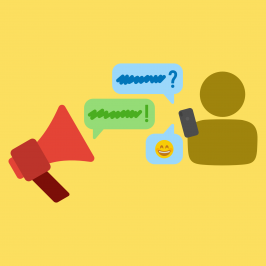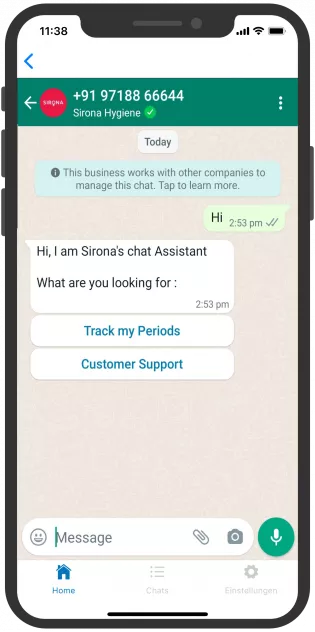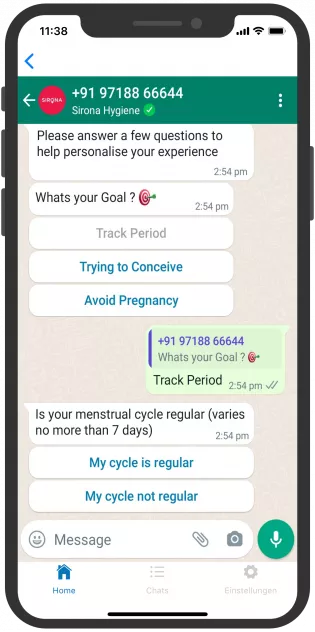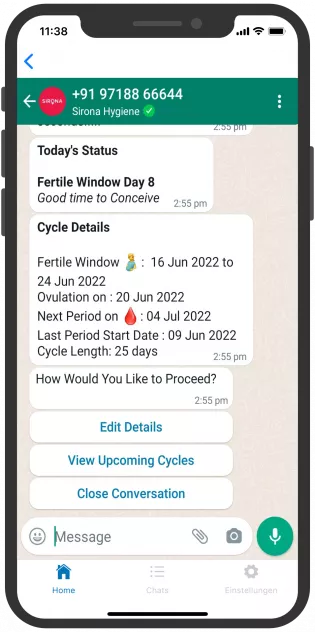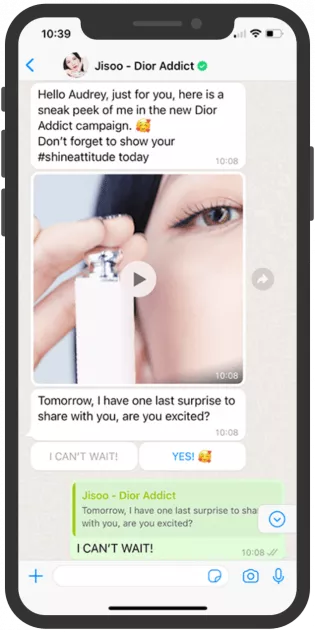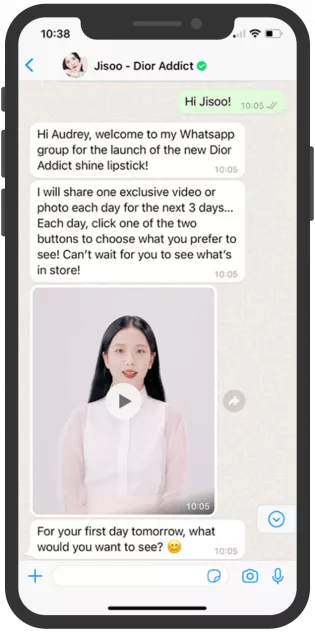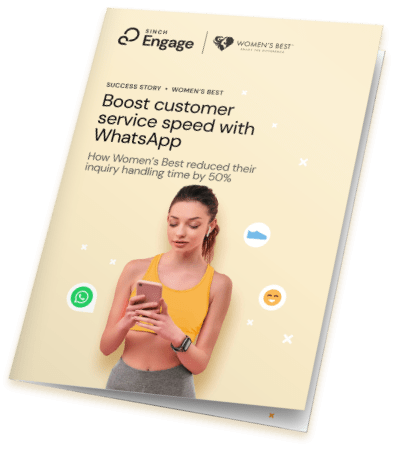In this article:
- What is conversational marketing?
- Is conversational marketing just a hype?
- The evolution of conversational marketing
- What makes conversational marketing successful
- Pull communication in conversational marketing: What matters is how relevant your content is!
- Conversational marketing: virtual assistants and chatbots
- Examples of creative conversational marketing
You've probably heard the term "conversational marketing" before, but what does it mean? It actually lets you connect better with your customers — through conversations. In the following, we explain how that works, why customers love it, and why the trend is here to stay!
Conversational marketing has a nice ring to it, especially if you're a marketer: conversation meets marketing, so it kind of smells like potential, doesn't it? But what exactly is conversational marketing? How does it benefit me as a marketer? Are there tools and platforms for it? And, how are other companies working with the strategy?
In this guide, we'll answer all of these questions, and guide you through everything there is to know about conversational marketing.
What is conversational marketing?
The term "conversational" clearly implies a "conversation" or "talking"! This might sound trivial, but it's a huge contrast to traditional one-way-marketing that's almost exclusively based on bombarding consumers with information (if they want it, or not).
In contrast, conversational marketing is a direct interaction between companies and (potential) customers. It opens up the way for a two-way-conversation. That's also why conversational marketing is also called "interactive marketing". Due to its conversational character, this type of marketing often takes place on instant messaging apps. Why? Because messaging apps are basically the digital interactive chat tools of our time!
It's important, though, not to confuse conversational messaging or marketing with conversational commerce. Conversational commerce refers specifically to the sales process in direct conversation with customers, for example via WhatsApp. The other, more general terms, refer to the practice of engaging in conversations with customers through a messaging service.
While companies in conversational commerce try to sell something to the customer through dialog, conversational marketing is more about brand positioning, awareness, and attention.
Matthias Mehner, VP Global Marketing, Sinch
Often, the term "conversational" is also equated with chatbots or even artificial intelligence, but this is not particularly accurate. Sure, chatbots are a conversational technology, but conversational marketing is not the same as using a chatbot. It can actually also be handled entirely by humans. So, while some companies might use conversational chatbots in their conversational marketing efforts, it's not a must.
Is conversational marketing just a hype?
The word "hype" means that theres 'more discussion and writing around a particular topic than there is real substance to it. For instance, ChatGPT is currently still in a hype phase. It's clear that interactive marketing is a new trend that hasn't reached its peak yet, similar to marketing on messaging apps. Nevertheless, there are already some examples of very successful conversational marketing campaigns.
By the way, the experts at Gartner rank the topic of conversational marketing high in their latest hype cycle report and expect the topic to make a breakthrough in two to five years.
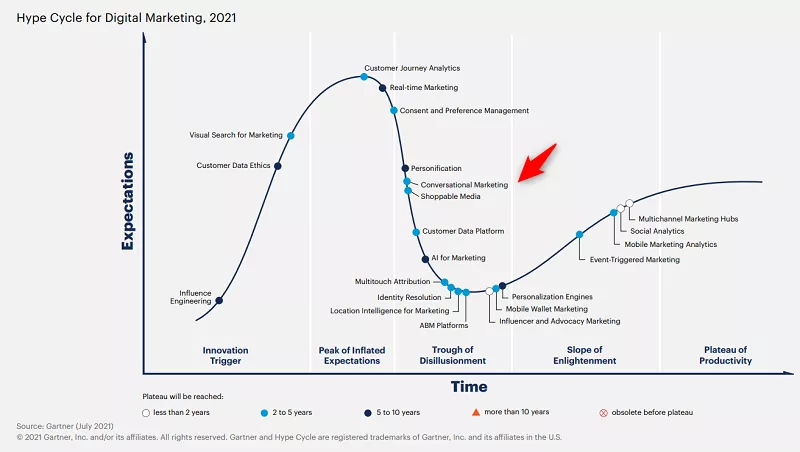
The shift towards conversational marketing is mainly due to the popularity of messenger services and the nearing extinction of tracking cookies. As many users have become more and more sensitive to tracking cookies and browsers have become more and more resistant to data collection, marketers have to look for new ways to collect relevant customer data.
Shift towards interactive marketing needed
The solution could be a shift in mindset, away from one-way and towards two-way conversations. Think about it! Why do we need to constantly flood customers with advertising messages, while we don't even really know if they want them? Instead, you can simply ask customers about their preferences and interests in a dialogue—and then give them what they want!
This will allow you to meet customers' needs so much better! Even more so, because the desire for transparent and personal, dialogue-based communication is also growing on the customer side. One impressive number to prove that: on Meta's family of messaging apps, one billion users send companies messages every week.

Meta's "Conversations" conference in May of 2022 also showed that conversational marketing is more than just a hype. At the conference, the parent company of WhatsApp, Facebook Messenger, and Instagram Direct clearly positioned itself in the direction of a conversational future between companies and consumers.
But the channels on which the dialogue takes place are at least as important as the conversation at eye level because it's the channels that enable, further, and get the most out of conversational marketing. Conversational marketing takes place on the most personal and popular communication channels of all: on messenger apps.
Why? Because it is already the channel people use to communicate with friends and family, so it's only natural for them to want to stick to the same channels when talking to a business.
The evolution of conversational marketing
Professional messaging is constantly changing and evolving. Up to now, there have been three phases.
Phase 1: Distributing content through push notifications
The focus of messaging in recent years has been primarily on the distribution of content. Customers subscribed to messaging newsletters and received information on a regular basis. Marketers have used this form of direct marketing as well, by sending out broadcasts and bulk messages to potential customers.
For companies, the effort was manageable on WhatsApp, especially when looking at the much better ROI. The content reaches all recipients immediately, and the open rates can reach over 90% in the first 15 minutes. In e-commerce, click rates reach up to 80%.
Phase 2: Direct customer communication and customer service
In the second phase, companies realized that messaging was also ideal for one-on-one communication and they focused more on customer service through messaging apps. This personalized form of engaging with users can be incredibly powerful. Some companies reach conversion rates of up to 90%.
Phase 3: Conversational marketing
Conversational marketing is the third phase in messaging. As messaging apps like WhatsApp or Facebook Messenger improved and allowed multimedia integration, such as sending images, videos or voice chats, it became easier for companies to combine content marketing with conversational marketing. With WhatsApp bringing back its broadcast feature in 2021 and Facebook in 2022, companies now can find even more intricate ways to get the most out of all forms of messenger marketing.
Obviously, all forms of marketing have their pros and cons, and the best approach also depends on your concrete use case. One thing is clear though: pushing conversational marketing has now more advantages than ever!
What makes conversational marketing successful
Conversational messaging marketing campaigns always have one thing in common: they position the brand as a "friend and helper". We recognize all the ingredients of successful interactive marketing in these campaigns.
- They offer real added value for users.
- The added value consists not only of the product, but also of the brand's know-how ("thought leadership").
- They enable you to talk to your customers like they would with their friends on a messaging app like WhatsApp.
- They initiate a direct relationship between brand and customer.
- The campaigns can the use of media in the WhatsApp chat.
- You enable the (further) utilization of the created content on all possible platforms.
Pull communication in conversational marketing: What matters is how relevant your content is!
Delivering relevant content doesn't only refer to meaningful content, there's also a situational relevance. Meaning: is this content relevant to this specific person, and is it relevant now? Therefore, in pull communication, relevant information or content is defined by the three wh-questions: "what?" (content), "who?" (target group), and "when?" (timing).
The following examples show how companies are already using pull communication to fulfill their customers' wishes with relevant content.
Bloomberg Quint: real-time content from the financial sector increases relevance for users
Bloomberg Quint, an Indian joint venture of Bloomberg News and Quintillion Media founded in 2016, offers decision-makers and executives relevant information about the financial market in real time on WhatsApp.
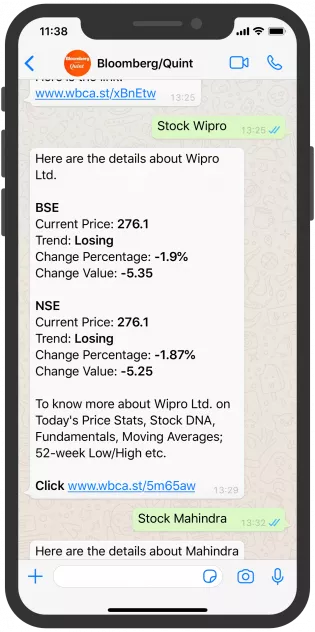
Real time is important because the decision maker (who?) wants to know the current share price of Wipro (what?) now (when?). And only now and not every day. Later or tomorrow, this information is no longer relevant to him. Requested with a keyword, they automatically receive the latest information about Wipro.
This shows how in pull marketing or conversational marketing, you pull the user in with content that is currently relevant to them.
Newschecker India: User decide what content they see and when
Similarly, the Indian fact checking company, Newschecker, first asks their subscribers about the type of content they are interested in (what), and lets the user decide at what point they want to access the information (when).
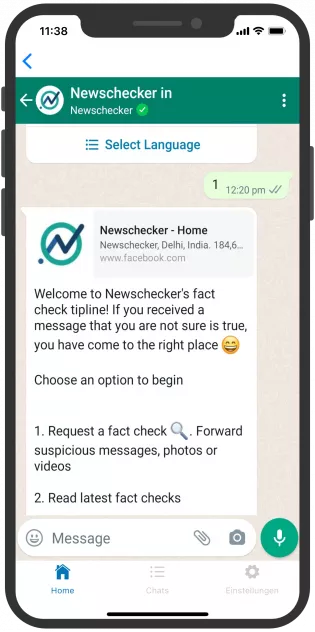
Why not just Google it?
Users could of course just Google if a fact is correct or find out the current stock price online. If they do that, though, they will most likely not see your content, as you're competing with millions of results.
And there's more. Google has started showing users answers in preview snippets. This means that people won't even need to click on a link anymore to find the content they need. Instead, they get it right on the Google page. That's great for Google, but bad for your business.
So, reaching out in a conversational way to customers on messaging apps, gives you a standing chance against Google and other competitors, while at the same time, forming a closer bond with your customers.
Conversational marketing: virtual assistants and chatbots
Today, conversational marketing is strongly associated with voice assistants, like Alexa, Siri, and others. In a way, both, voice assistants and conversational marketing are based on the same principle. You give the user the option to communicate, the user then decides to start a conversation, and then they receive an answer.
Of course, the main difference is that virtual assistants use artificial intelligence (AI) while conversational marketing can also be done by humans, where your customer service team answers the questions, for example. Nevertheless, basic chatbots can help your agents as well. For example, a bot can ask a user what content they are interested in, which then again helps you to send them the content they really want.
Sirona, an Indian brand for feminine hygiene products, uses a chatbot to ask their WhatsApp customers what they are interested in before delivering the wanted content.
Examples of creative conversational marketing
The theory of interactive or conversational marketing sounds great, but what does it look like in real life? The following examples show how creative companies approach their campaigns, and how successful they are with them.
Adidas promotes a new sneaker on WhatsApp
The amateur soccer teams in Europe face a pretty common issue: they are often a player short for their games. This is due to the fact that people play in their free time, and the matches are usually on weekends, where players might have other plans.
Adidas therefore came up with a very clever solution for this problem. The sports brand created a WhatsApp account, and every amateur team that needed a player could contact Adidas on their WhatsApp number to "rent" one free player. Of course, the substitute player then would turn out to be a famous soccer star, like Kaka.
The rent-a-pred campaign basically advertised that they would send teams in need a 100% unfair substitute player.
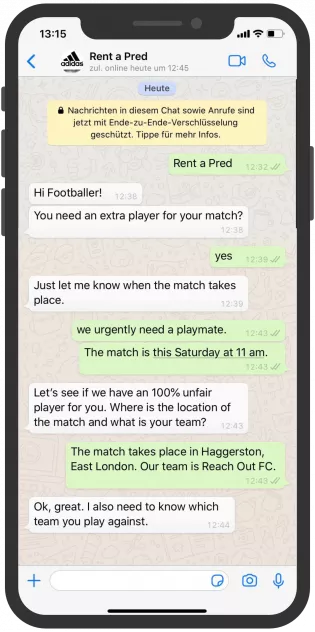
With this campaign, Adidas created a huge pull for their brand, gained many new contacts from an interesting target group where they could then promote their new sneaker.
Dior teams up with WhatsApp influencer to promote a new lipstick
Jisoo is a Korean singer, actor, and host, and has a large following on Instagram. She's also a brand ambassador for the luxury brand Dior. For a promotional campaign for a new lipstick, Dior worked with Jisoo in a WhatsApp influencer partner campaign. Basically, Dior created a WhatsApp account for Jisoo where fans could write her, get insights into her work as an ambassador for Dior, and check out the new lipstick. Jisoo gave users beauty tips, and users also received an exclusive link to buy the new product.
In the end, Dior was able to position its brand prominently, generate awareness for their new product, and increase sales.
Women's Best goes from conversation to selling
Women's Best is a brand for athletic clothes, and they have also found a very successful approach to conversational marketing. They offer users a WhatsApp channel where they can ask questions about the brand's products.
Women's Best knows: users that reach out to them are already interested in a product, so from there it's only a small step to go from a conversation about a product to selling an interested customer a product.
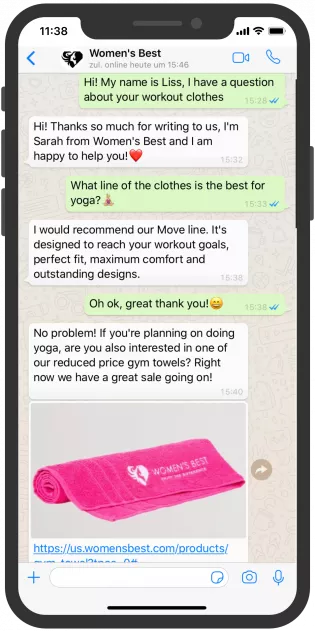
Even if the user doesn't buy a product, they might in the future! And all they will have to do for that is go back to the same chat conversation on WhatsApp. Furthermore, Women's Best can use these contacts to send out targeted promotional messages, which goes back to the idea of sending the right user the best content at the most opportune moments.
And that's what conversational marketing is all about: engaging your customers, listening to them, opening a channel for a two-way conversation, and delivering the right person the right offer in the right moment, and on their preferred channel. That's what'll make your marketing strategy more successful!
